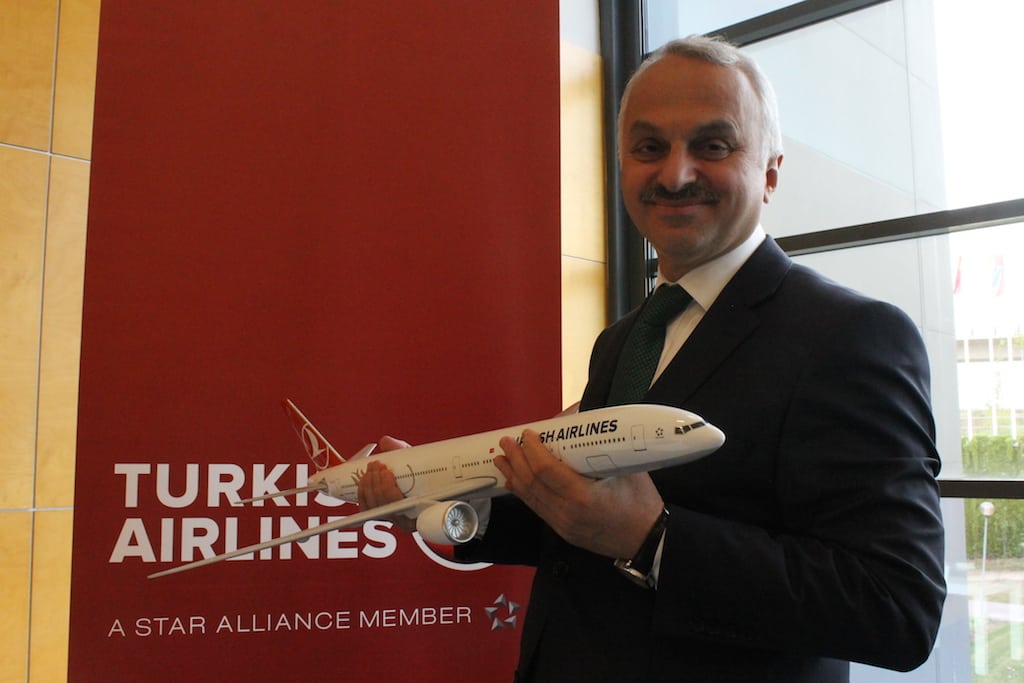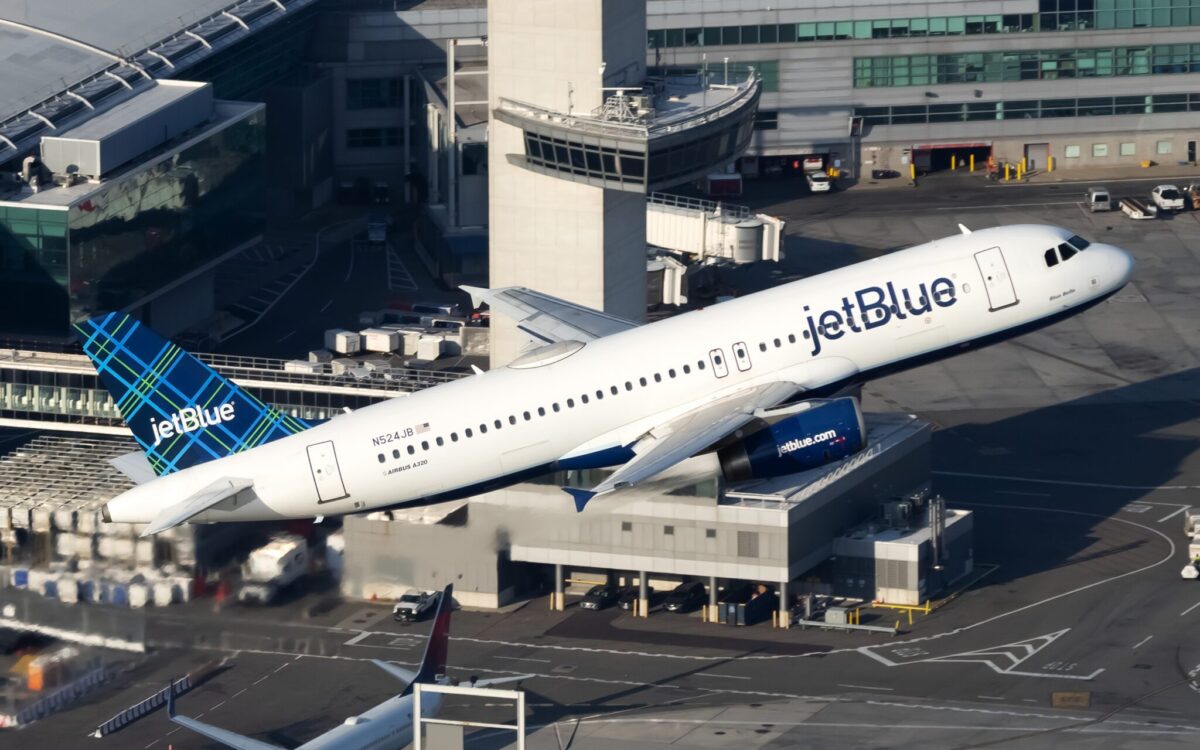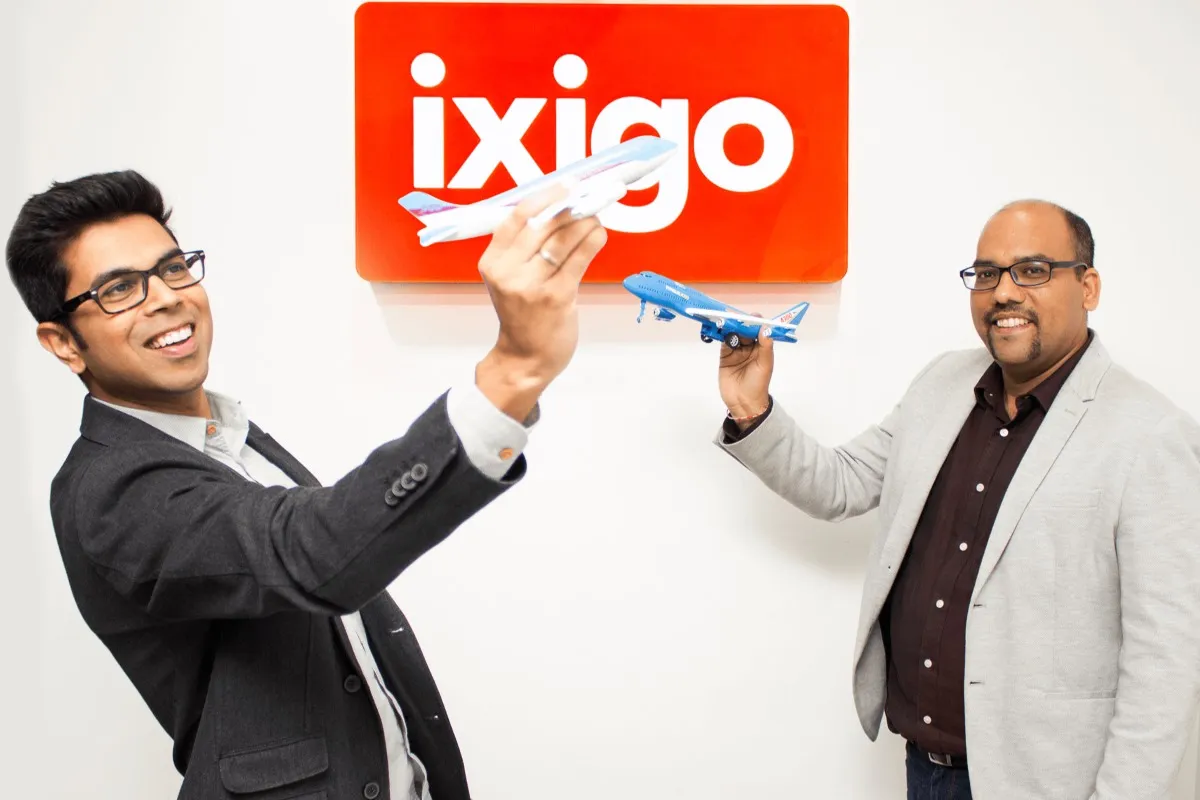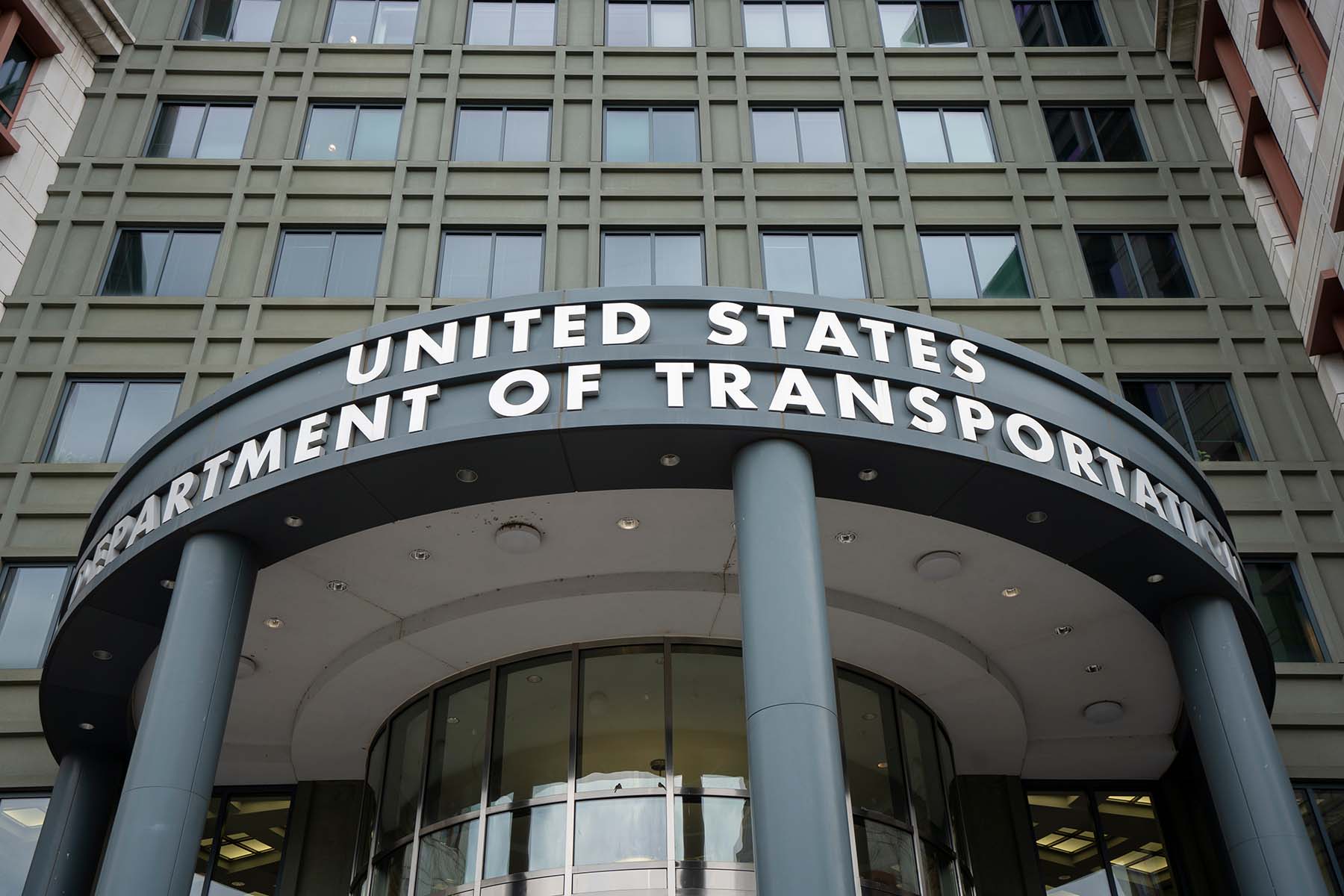Interview: Turkish Airlines CEO Says His Airline Is Better and Different Than Gulf Carriers

Skift Take
Turkish Airlines CEO Temel Kotil has been at the helm of one of the world's fastest-growing carriers for a decade, but looking back isn't feasible when your hub is poised to become one of the world's busiest.
Kotil joined Turkish Airlines in 2003 and became CEO two years later, and since then has helped usher in strategies propelling the carrier to become a formidable player on the global aviation stage.
With its Istanbul hub positioned at the crossroads of Europe and Asia, anything except expansion and growth isn't an option. As Turkish Airlines looks to move into its new hub at Istanbul New Airport in 2018, it has plans to bring more comfort to the terminal experience for all passengers, not only business class travelers. And with an expected 120 million passengers a year flying through New Airport by 2020, implementing these new offerings and products won't be an easy task.
Skift sat down with Kotil last week to talk about how the airline differentiates itself from its Gulf carrier neighbors such as Emirates, Etihad Airways and Qatar Airways, its social media strategies and how it's working to connect with a younger generation of travelers.
An edited copy of the interview can be read below:
Skift: How are Turkish Airlines' ambitions different from the ambitions of the Gulf carriers, i.e. Emirates, Etihad Airways and Qatar Airways?
Temel Kotil: We’re a European airline but we have the highest number of originating destinations in the Middle East. We are in seven cities in Saudi Arabia and the eighth and ninth cities are coming. Also, we are feeding Africa to the world and are in 44 cities in Africa and this is more than any other airline flying to Africa. The high number of our originating destinations connecting to Africa is better than other airlines.
So what’s different for us from the Middle East carriers is that on one hand we are an African airline, on one hand we are a Middle East airline and on one hand we are a European airline. But we are really a European airline and our originating destinations are much stronger than the Gulf carriers.
We are growing 17% a year for the last 10 years and this is much more than the Gulf carriers. They may be bigger than us today, but tomorrow, who knows. We’re growing much faster than them.
Skift: What is your position with the Open Skies debate?
Kotil: The Gulf carriers don’t have their home markets, and that’s a problem. My American colleagues say that there should be open and fair skies and I believe in that. If you don’t have your home market, we will open the market to you.
Turkey signed the Open Skies agreement with the U.S. in the 1990s, earlier than the other EU countries. We started service from Istanbul to San Francisco recently and we’re also in Los Angeles, DC, Chicago, Houston, and New York. Naturally our relationship with the U.S. is stronger than with Gulf countries because our relationship dates back more than a century with the U.S.
Skift: Let's switch gears a bit and talk about whether or not you plan to lease back any of the Malaysia Airlines aircraft?
Kotil: We said no to doing that actually. Of course 380s are nice, good aircraft but this isn’t part of our plan. Malaysia is recovering, it’s a good airline and I've flown with them several times. The second accident in Ukraine was really an unfortunate one and everyone blamed Malaysia Airlines for that but they were the victims actually. Hopefully they will continue to recover.
Skift: How will the opening of Istanbul New Airport impact your operations in the city?
Kotil: Right now we have 246 aircraft on order and 267 aircraft in operation so New Airport will essentially give us more room to breathe and grow. Our current hub at Ataturk Airport is a small airport, yet we still have 57 million annual passengers at that airport, the third largest in Europe. About 10% of our costs are our operations on the ground, 90% are our costs in the air.
At New Airport, we’re going to have business lounges for economy passengers and they’re going to be big business lounges. So if you’re coming from New York to Istanbul and then continuing on elsewhere and have a two or five hour layover these lounges will be perfect and if the layover is longer we know customers will probably want a hotel instead.
We can’t offer this at Ataturk Airport right now because there’s no space. This new facility will be the best in the world and it will open on October 29, 2017. This is the date of the ceremonial opening of New Airport so we will do one big shift there during our transition period. If you remember, Qatar Airways made a big shift when the new airport in Doha opened.
When we shift to New Airport in 2018, we will have 70 million passengers flying through that airport a year on Turkish Airlines. Other airlines will also want to fly more passengers through there as well, so most likely by 2020 that airport will have 120 million passengers flying through it each year. So that’s good enough to build it and we have the ability to offer more.
Skift: Thinking about social media, Turkish Airlines has two Twitter accounts for the brand. What is the purpose for this?
Kotil: If you’re communicating on social media with customers, you need to give them your time. If you are writing short messages, it's really easy to misunderstand somebody, but easier to not do that if you have separate accounts. This is why we have the customer care account. And if you remember, we have a Twitter account for the Turkish market for our customers flying to smaller cities within Turkey.
There's one lady who is leading the customer care account and I get some of the tweets myself, and I send to her and she is doing a great job. She will even reply to you in the middle of the night.
This is one of the main reasons for the separation. You can be the greatest airline in this world and have the largest network, and you can have one person unsatisfied because you lost her baggage and you always have to be responsive. Customers are the boss. We also don't necessarily pay to acquire YouTube subscribers.
Skift: Can you explain the strategy behind your YouTube ads?
Kotil: The idea with our video ads is that we’re giving our customers soft messages. We’re never giving them hard messages such as ‘we’re the best airline.’ We’re focusing on food to show the customer that we care about them and want to widen their world.
When we target customers in ads, we’re showing them on board and that’s really what we think needs to be done and we’re doing that with soft messages, like with the food. Our motto is actually “fly with us once.” That’s good enough, and if you continue flying with us, no problem. We have the best food in our economy classes and we’re proud of that.
We find that we don’t have a problem keeping our customers and having them come back and this starts at the gate. Before takeoff on all the other airlines they offer business customers the welcome dinner. In our economy classes we don’t have time for that, but in our culture when somebody is entering your home you give them something to welcome them. So we offer them a small box of Turkish delights before takeoff in economy and this is customers’ first contact with the Turkish culture.
We want to reach the young, middle and business classes. We have the videos about Africa because the young people in Africa want to fly. This means that our objective is to give the idea to the potential African customers that we love them and we care about them. In Africa specifically its middle class is 1.2 billion people, which is bigger than China.
Africa is a big focus for us now. Our ads are also focusing on the Turkish market, targeting young children five or six years old with videos of our planes landing and the captains saluting the children at the airports.
Skift: Do you change your message at all depending on the platform?
Kotil: We use the same message across all platforms, but it depends on the ages. Today, our model is that we want to “widen your world.” We want to show you that we’re flying to more cities than any other airline. We’re not the largest airline on this Earth, we’re the 13th largest in the world but our numbers from 2014 aren’t public yet. But in terms of flying to cities, we fly to more cities than any other airline. We fly to 10 cities in Russia, for example.
Skift: Can you talk about the upcoming Turkish Airlines blogger trip to Turkey and how this fits into the brand's strategy to reach the millennial travel market?
Kotil: We’re bringing youth groups from the U.K. and U.S. to Turkey and will have a workshop with them and do these kinds of things and we have many, many projects. The millennial market is very important to Turkish Airlines. I am not young anymore, I am 55, and I know from my kids and the young generation that their tastes and understanding for how they value airlines are different from mine.
My advice to carriers for being able to better reach the millennial market is to start with your team. The marketing team needs to be really fresh, young, in their 20s and I believe that the marketing managers should be about 25 to 27 years old, give or take. They know the language of today and I know it a bit less.




